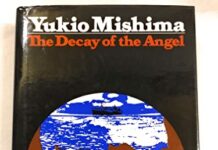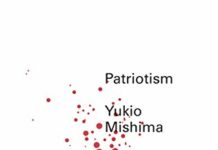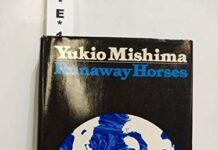
Ebook Info
- Published: 2013
- Number of pages: 399 pages
- Format: EPUB
- File Size: 0.50 MB
- Authors: Yukio Mishima
Description
Yukio Mishima’s Spring Snow is the first novel in his masterful tetralogy, The Sea of Fertility. Here we meetShigekuni Honda, who narrates this epic tale of what he believes are the successive reincarnations of his friend, Kiyoaki Matsugae. It is 1912 in Tokyo, and the hermetic world of the ancient aristocracy is being breached for the first time by outsiders — rich provincial families unburdened by tradition, whose money and vitality make them formidable contenders for social and political power. Shigekuni Honda, an aspiring lawyer and his childhood friend, Kiyoaki Matsugae, are the sons of two such families. As they come of age amidst the growing tensions between old and new, Kiyoaki is plagued by his simultaneous love for and loathing of the spirited young woman Ayakura Satoko. But Kiyoaki’s true feelings only become apparent when her sudden engagement to a royal prince shows him the magnitude of his passion — and leads to a love affair both doomed and inevitable.
User’s Reviews
Reviews from Amazon users which were colected at the time this book was published on the website:
⭐Warning: there are some SPOILERS in this review, but I will warn the reader in advance. If you have not read the book yet you should be safe reading my review as long as you heed the warnings when they appear and take appropriate action. I am putting my faith in you, dear reader, do not disappoint me…There is a book on the philosophy of biology, written by Kim Sterelny and Paul E. Griffiths with the interesting title “Sex and Death”. (You can find it
⭐). I have not read the book but I find it interesting that the subject matter of biology can be so succinctly summarized. Biology is the study of life and no one who studies life can ignore the overwhelming realities of sex (all life reproduces itself) and death (for each individual life eventually comes to an end). One of the reasons I find it so interesting that the field of biology can be summarized in two words is because I also happen to think that the themes of literature can also be summarized by the same two words. I feel fairly certain that every novel, poem, or play I have ever read has either been about sex or death (and usually both). That is certainly true of Yukio Mishima’s novel, Spring Snow, which is the first in his Sea of Fertility tetralogy. Sex and death which, in Mishima’s novel, appear in the guise of beauty and impermanence, are the dialectical forces that structure the novel. There is heart-breaking beauty in the world but, as seemingly transcendent as the experience of beauty can be, ultimately nothing can escape the reality of impermanence. Mishima skillfully weaves a tragedy out of the intertwining threads of beauty and impermanence.The novel centers around a love affair between Kiyoaki and Satoko. Kiyoaki’s family is of a lower social station than Satoko’s so Marquis Matsugae (Kiyoaki’s father) sends his son to be educated in Satoko’s household as a child. The novel begins years later when Kiyoaki is nineteen years old and living back at home. A love begins to blossom between Kiyoaki and Satoko but the Marquis winds up arranging a marriage between Satoko and Prince Toin which she does not feel she can refuse. At a crucial moment in the story Kiyoaki fails to present any objections to the arrangement and the engagement moves past the point of no return when the Emperor approves of the engagement between Satoko and Prince Toin. To break the engagement off after the Emperor’s approval would be sacrilege so Kiyoaki and Satoko are forced to engage in a secretive love affair in the brief period between the engagement and the wedding ceremony.The novel is thematically rich and I am not going to be able to summarize all of the themes of the novel. It is also worthwhile remembering that this is the first novel in a tetralogy so the themes become, I am sure, more complex as the novels progress. I have just started the second novel in the series and I can already see Mishima developing some themes in that novel that were merely hinted at in this one. I will simply highlight what I think are some of the most interesting themes of the novel.There is definitely a Buddhist metaphysics operating throughout the novel. There are lots of references to impermanence throughout the novel, to “time’s dissolving whirlpool” (163), to “the monstrous roar of negation” that surrounds “the merest flicker of time” (244), and to the minor changes that are constantly altering everything in the world. When Kiyoaki sees Satoko after a period of absence “He felt that he was looking at a fine painting whose colors, once brilliant, were fading horribly before his very eyes. What he had spent ten days praying to see in an agony of expectation had undergone a subtle change” (275). Everything changes, the world is ceaseless becoming, and human beings are particularly finite and changeable. There are two Siamese princes visiting Kiyoaki and one of them is in love with a princess back at home. SPOILER ALERT: THIS IS YOUR FIRST WARNING READER. While the princes are vacationing with Kiyoaki and Honda they learn of the princess’ death. The Siamese prince says “I clearly saw the bright sea and the shining beach just as they were. Why wasn’t I able to see the subtle change that had occurred deep in the substance of the universe? The world was constantly and imperceptibly changing” (253). We can see here the Buddhist notion that permanence is an illusion. Nothing remains the same even for a moment though our minds are not always subtle enough to grasp the changes.This sense of impermanence hovers over the love affair between Kiyoaki and Satoko. There is a scene where Kiyoaki and Satoko make love underneath the shadow of a boat on the beach to hide from the moonlight. Mishima writes that “They were not lying in the protection of a solid structure or a rocky ridge, but of something fortuitous, that in a few brief hours might be far out to sea” (243). Satoko is afraid that “this huge old fishing boat might begin to slide noiselessly across the sand even now and plunge into the water and sail away” (243). The boat is a metaphor for the temporary conditions that make their love affair possible. The wedding ceremony has not taken place yet. Satoko is still able to escape at times with the help of her attendant Tadeshina. Kiyoaki and Satoko are very aware that the possibility of their love affair is dependent on fortuitous and impermanent conditions. When those conditions alter their love affair will end. Mishima is expressing the Buddhist metaphysical principle of codependent origination. Nothing has inherent existence but depends on its conditions for existence and those conditions are radically impermanent. This is why I said at the beginning of my review that Mishima weaves a tragedy out of the intertwining threads of beauty (both Kiyoaki and Satoko are noted for their exquisite beauty) and impermanence.Another theme running throughout the novel is the difference between different possible relations to life. This is most clearly expressed in the differing characters of Kiyoaki and Honda (Honda’s character is developed further in the later novels of the tetralogy and the contrast becomes even more apparent). There is an early scene where the two characters are lying in the grass. Mishima writes that “The rough grass pricked through the backs of their kimonos, making Kiyoaki rather uncomfortable. It gave Honda, however, the sensation of having to endure an exquisitely refreshing pain” (18). I think the two relations to life are beautifully expressed in this scene. The grass seems to me to be a metaphor for samsara. It reminds me of the hair-shirts that Christian saints used to wear to remind themselves of the suffering of this world. Kiyoaki is not really comfortable in this world, while Honda is. Immediately following this description of Kiyoaki and Honda on the grass Honda asks “what more could you want from a day like this?” Honda is clearly happy in the world of samsara, but Kiyoaki wants something more, “Something definite. What it might be, I’ve no idea” (18).I am convinced that Kiyoaki is devoted to an other-worldly beauty. Kiyoaki gets his first vision of this other-wordly beauty when he is a page attending Princess Kasuga (9). Ordinarily, such an experience would have solidified the worldly feelings of nationalistic loyalty, but Kiyoaki’s tutor, Iinuma, knows that “it was hopeless to expect him [Kiyoaki] to swear the enthusiastic oaths of loyalty to the Emperor that a night like this would have invoked in any normal young Japanese boy striving toward manhood” (11-12). Kiyoaki has glimpsed something that transcends all worldly social obligation. SPOILER ALERT: THIS IS MY SECOND WARNING READER. At the end of the novel, the love affair between Kiyoaki and Satoko has ended, and Satoko has taken vows as a nun. Kiyoaki goes to try to see her in the monastery and on his walk into the monastery has another vision of other-wordly beauty. This is one of the most beautiful passages in the book. It is too long to quote in full but here is some of it “The scenery that had become familiar in recent days now had a strange novelty about it that was almost unnerving…Surrounded by unbroken silence and utter clarity was a world untouched by blemish of any kind. And at its center, so inexpressibly poignant, at its innermost heart, he knew, was Satoko herself, her figure as quiet and still as an exquisite gold statue. But could such a still and perfect world, which eschewed all intimacy, really bear any relation to the familiar world he knew?” (375)That last sentence is important. The beauty that Kiyoaki glimpses seems to have little to no relation to the everyday world. The everyday world is the world of impermanence. This is a standard conflict in Japanese literature I believe: between beauty and impermanence. It is also important that right after this vision Kiyoaki is reminded of his experience as a page for Princess Kasuga (375-376). This connects his other-worldly vision of beauty in the monastery with his earlier experiences and makes it clear to the reader that Kiyoaki has been devoted to something other-worldly his whole life and has followed it to his own death and destruction.Another theme the novel highlights is the conflict between passion and social taboos. Passion is an irrational force that goes beyond the bounds of law and propriety. Kiyoaki and Satoko know that they are violating social taboos in having their affair after the Emperor had already given his approval to Satoko’s engagement. Their affair threatens the state and its sovereign. SPOILER ALERT. Late in the novel, after Satoko has cut off her hair as a prelude to taking the vows, Mishima writes “No one considered Satoko’s soul; it was her hair alone that pertained to the national interest” (332). The soul, and its passions, lie outside the bounds of the state. Passion cannot be channeled into socially acceptable forms. The wind bloweth where it listeth. This is desire as a potentially destructive and revolutionary force. Desire can alter social customs and the world of social customs that Mishima is describing in this novel were undergoing radical changes. Mishima seems to see something beautiful in this devotion to the irrational even when it leads to your own destruction.There is also an interesting play within a play in the novel that I think highlights a number of themes of the novel. Honda is training to be a judge and so he goes to the courtroom to watch a case being tried. A woman is being tried for killing her boyfriends lover. I will not describe all the details but there are a few important details. First, the murderess stabbed her boyfriend’s lover with one of his knives. She claims she only went to talk to the woman and try to reason with her but why did she bring the knife? She claims that she was getting it sharpened as a nice gesture for her boyfriend. She does get the knife sharpened but she does not feel like going home immediately and instead goes to find her boyfriend’s lover. It is clear in Mishima’s narration that the woman is unclear about her own motives. She has rationalized her motives. She clearly intended to stab the woman but that was too heinous to admit, even to herself, so she invented a pretext for taking the knife with her. This is one example, of many, of really perceptive psychological insight on the part of Mishima.At the beginning of the tale Mishima writes “it was clear enough that the chain of events leading up to this crime of passion had unfolded relentlessly in a manner that must lead inevitably to tragedy” (204). This is also a Buddhist metaphysical principle. It is impossible to escape the chain of causes. None of the actors in the tragedy intended such an end but once the first decision was made, and enacted, a chain of causes was set in motion that was beyond the control of any of the participants. I call this episode a play within a play because it dramatizes in a condensed fashion the drama of Kiyoaki and Satoko’s love affair. Everything that is said about the tragic story of the murderess could also be said about Kiyoaki and Satoko’s situation.As I believe Heraclitus said “Character is fate”. We are driven by unconscious motives (what, in another part of the book, is described in Buddhist terms as the storehouse consciousness) just as the woman was driven by unconscious motives when she took the knife with her. Similarly, Kiyoaki is led to his own destruction through his own passion. There is also a point about being part of a web of causality over which we have little control. The murderess says “If only Hide [her boyfriend’s lover] had not been there that night, everything would have been alright” (205). Our fates are ruled by fortuitous circumstances. SPOILER ALERT. It is also clear that the tragedy of Kiyoaki and Satoko has seeds that lie beyond either of their conscious decisions, in a pact made between Count Ayakura (Satoko’s father) and Satoko’s attendant Tadeshina when Kiyoaki and Satoko were still small children (306).There are two other themes I want to quickly highlight. First, there is the theme of consciousness bringing pain. Early in the novel an Abbess tells a parable. A man lay down to sleep in a cemetery at night and awoke with a thirst. He reaches out his hand and scoops some water from a hole and drinks. The water tasted pure and delicious but when he awoke he saw that he had been drinking out of a skull. The man realized that when it was dark, when his conscious mind was not operating and making distinctions based on desire, the water tasted refreshing, but as soon as it was light, as soon as he was able to make distinctions, he was disgusted. This is another Buddhist principle. As long as we make distinctions based on desire we suffer. Honda has a very interesting question after hearing this parable “once Yuan Hsaio had been thus enlightened, could he drink that water again, secure in the knowledge that it was pure and delicious?” (31). This, to me, highlights the impotence of consciousness. We cannot just decide not to be disgusted and the insight alone will not allow us to drink water from a skull without being disgusted. This requires a much more fundamental transformation.There is another place where the theme of consciousness being the source of suffering arises. There is a scene between Baron Shinkawa and his wife. His wife is talking about how beautiful her kimono is and “how gorgeous it would look to someone on the other side [of the lake] who saw it reflected in the water”. She complains “Why can’t I be on both sides of the pond at once? One is so frightfully limited, isn’t one, don’t you think?” (127). We cannot be and see ourselves at the same time. This is part of our finitude. We want to consciously enjoy things and be them at the same time. We want to be happy and see ourselves being happy at the same time. D.T. Suzuki talks about this in
⭐. It is impossible and this is a cause of suffering. Consciousness makes it impossible to fully correspond to ourselves. We are always outside ourselves to a degree. We can never entirely be ourselves, but we also cannot fully escape our embodiment and just see ourselves.The final theme I want to highlight is the Nietzschean joy in destruction that I see operating throughout the novel. There are a number of places in the novel where a character is in agony and joy at the same time, or, where a character seems to feel joy at the thought of their own destruction. Nietzsche believed that was the essence of tragedy. Tragedy affirmed life by affirming the joy in destruction. I am convinced that Mishima’s novel represents a similar sensibility. This novel really succeeds in exploring the fundamental conflicts that shape human life: the conflict between activity and passivity, passion and reason, nature and society, the individual and society. Tragedy tends to be made of these conflicts and this novel is certainly made of the same conflicts as Greek tragedy. Like the tragedians, however, Mishima is too good an artist to come down simplistically in favor of one side or the other. If Kiyoaki represents passion and individuality and Honda represents reason and social duty it would be too simplistic to say that the novel endorses one at the expense of the other (this also becomes clear in the second novel). It would also be a mistake to reduce either character to one side. Like Yin and Yang, both Kiyoaki and Honda contain their opposites within themselves.Besides being thematically rich the novel is also beautiful and lyrically written. The lyricism of Mishima’s writing really comes across in the translation. Mishima is also able to construct a novel that is both specific, it takes place at a particular time and place, and universal, the themes transcend that specific time and place. Sometimes love stories set in different times and places fail to reach the level of universality. They become bogged down in the specific etiquette and social customs of a particular time and place and fail to reach the universal human emotions that are present in all times and places. Mishima’s novel does not suffer from such a failing. Mishima is also able to convey powerful emotions through restraint. The final meeting between Kiyoaki and Satoko is beautifully written and heart-breaking. It is a central scene in the novel and it is a scene that, I imagine, would be difficult to write. Mishima handled it perfectly. He was a true master. I am definitely looking forward to making my way through the rest of his oeuvre.
⭐I don’t normally care for books that get too descriptive about the visuals, but I don’t even notice it with his writing. The phrasing and vocabulary flows so beautiful and truly brings you into the story. Eager to continue the series.
⭐In the past year, I’ve come to know and read comprehensively the work of two of modern Japan’s most treasured writers, Natsume Soseki (whose face adorned the 1000yen note for many years) and Yasunari Kawabata. Yukio Mishima was a friend and admired colleague of Kawabata. I’ve long considered reading Mishima, and now having read Spring Snow, the first novel of his tetrology, The Sea of Fertility, I have found my new literary love in Yukio Mishima.Spring Snow follows the fate of two aristocratic families in 1912 Tokyo, most closely the dissolute, gorgeous young man, Kiyoaki Matsugae, and his friend from childhood, the equally stunning Satoko Ayakura. Whereas in the work of Kawabata and Soseki, intrigues of family and society, questions of tradition and discipline would be intensely explored within a chaste, philosophical frame, Mishima is unabashed in his making the arena more redolent of pure sexuality.Elegance is a quality assiduously pursued by our young man, inhabited wholly by Satoko, and it’s the tightrope between dispassionate Elegance and untethered Eros that is the engine of the novel.There is a richness to the atmosphere, descriptive, intuitive and insightful. Every scene is satiety, every view is breathtaking, every description, like Mishima’s evocation of waves on the shore, is indelible and definitive, each moment a work of art. It is because of this sensual plethora that one feels immediately immersed, subsumed, by the universe Mishima has created every time one rejoins the narrative. With no other writer have I ever experienced this feeling of suddenly, without preamble or momentary re-acclimation, entering this rich universe as if one had never left.I had to read through the last 100 pages at one sitting last night. Usually late night reading is a prelude to slumber. Not so, Spring Snow. I finished reading the book at 2a this morning, just as the Friday the 13th Harvest Moon, a phenomenon not to be repeated for another 30 years, rose in the night sky. Auspicious and commemorative; I look forward to obsessively devouring Mishima’s complete works.
⭐An incredible look at Japanese culture over 100 years ago. Slow paced marked with wonderful descriptions, it made be think of reading Proust. I look forward to the remaining three books in the tetralogy.
⭐This isn’t just a story. It is obvious from the first ripples that this book is quite introspective and illuminates Mishima himself. It is a tortured love story set amidst social obligation with underlying currents of pain and narcissism. ‘The course of true love never did run smooth,’ – naturally it is more interesting because of the restraints and the unusual character of Kiyoaki Matsugae. It is beautifully written with a thoughtful appreciation of nature and the changing seasons (even more than usual for a Japanese writer) which is relevant because the seasons are like a ticking clock. Time is evidently on the mind of Mishima. This is the first of four books in the Sea of Tranquillity tetralogy. I have taken a dip in it but I will save the swimming for later, once I have revived.
⭐The novel starts out slow but quickly picks up pace. Mishima’s poetic writing style lends itself to vivid descriptions. I am looking forward to starting Runaway Horses!
⭐Great book, excellently written and excellently translated meaning it still has the same effect to an English reader it obviously has in Japan.
⭐Mishima was a literary genius and Spring Snow is the work of an author at the height of his powers. Although the sequel Runaway Horses, is perhaps his best.
⭐good read
Keywords
Free Download Spring Snow: The Sea of Fertility, 1 (Vintage International) in EPUB format
Spring Snow: The Sea of Fertility, 1 (Vintage International) EPUB Free Download
Download Spring Snow: The Sea of Fertility, 1 (Vintage International) 2013 EPUB Free
Spring Snow: The Sea of Fertility, 1 (Vintage International) 2013 EPUB Free Download
Download Spring Snow: The Sea of Fertility, 1 (Vintage International) EPUB
Free Download Ebook Spring Snow: The Sea of Fertility, 1 (Vintage International)





